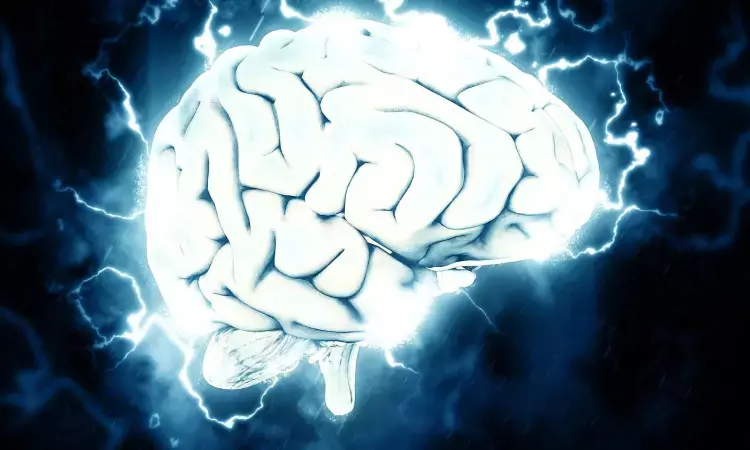- Home
- Medical news & Guidelines
- Anesthesiology
- Cardiology and CTVS
- Critical Care
- Dentistry
- Dermatology
- Diabetes and Endocrinology
- ENT
- Gastroenterology
- Medicine
- Nephrology
- Neurology
- Obstretics-Gynaecology
- Oncology
- Ophthalmology
- Orthopaedics
- Pediatrics-Neonatology
- Psychiatry
- Pulmonology
- Radiology
- Surgery
- Urology
- Laboratory Medicine
- Diet
- Nursing
- Paramedical
- Physiotherapy
- Health news
- Fact Check
- Bone Health Fact Check
- Brain Health Fact Check
- Cancer Related Fact Check
- Child Care Fact Check
- Dental and oral health fact check
- Diabetes and metabolic health fact check
- Diet and Nutrition Fact Check
- Eye and ENT Care Fact Check
- Fitness fact check
- Gut health fact check
- Heart health fact check
- Kidney health fact check
- Medical education fact check
- Men's health fact check
- Respiratory fact check
- Skin and hair care fact check
- Vaccine and Immunization fact check
- Women's health fact check
- AYUSH
- State News
- Andaman and Nicobar Islands
- Andhra Pradesh
- Arunachal Pradesh
- Assam
- Bihar
- Chandigarh
- Chattisgarh
- Dadra and Nagar Haveli
- Daman and Diu
- Delhi
- Goa
- Gujarat
- Haryana
- Himachal Pradesh
- Jammu & Kashmir
- Jharkhand
- Karnataka
- Kerala
- Ladakh
- Lakshadweep
- Madhya Pradesh
- Maharashtra
- Manipur
- Meghalaya
- Mizoram
- Nagaland
- Odisha
- Puducherry
- Punjab
- Rajasthan
- Sikkim
- Tamil Nadu
- Telangana
- Tripura
- Uttar Pradesh
- Uttrakhand
- West Bengal
- Medical Education
- Industry
MRI-Based Brain Connectivity Networks Predict Atrophy Progression in Parkinson's Disease, Study Finds

Italy: Cutting-edge research utilizing MRI technology has uncovered promising insights into predicting patterns of atrophy progression in Parkinson's disease (PD) through brain connectivity networks. The study, published in the journal Radiology, marks a significant advancement in understanding neurodegenerative processes associated with PD.
The researchers revealed that MRI illuminates the structural and functional organization of the brain -- thus helping clinicians predict the progression of Parkinson's disease in patients in its early stages.
They reported that Parkinson's "disease exposure" at one and two years correlated with white matter atrophy at two years and three years after baseline imaging.
The study stated that "brain connectome, both functional and structural, showed the potential to predict progression of gray matter (GM) alteration in patients with mild Parkinson's disease."
Parkinson's disease, a chronic and progressive neurological disorder, is known to manifest through symptoms such as tremors, stiffness, slowness of movement, and cognitive decline. Understanding the underlying mechanisms of brain atrophy progression is crucial for developing targeted therapies to slow disease progression and improve the quality of life for patients. Considering this, Massimo Filippi, University Hospital Maggiore della Carità, Novara, Italy, and colleagues aimed to assess the functional and structural connectivity of brain regions in healthy controls and its relationship with the spread of GM atrophy in patients with mild PD.
For this purpose, the researchers conducted a prospective study comprising participants with mild PD and controls recruited from a single center between 2012 and 2023. Participants diagnosed with PD underwent three-dimensional T1-weighted brain MRI scans to assess regional gray matter atrophy at baseline and annually for three years.
In healthy controls, structural and functional brain connectomes were generated using diffusion tensor imaging and resting-state functional MRI. Disease exposure (DE) indexes for each brain region were defined based on the connectivity patterns of all linked regions in the healthy connectome and the extent of atrophy observed in PD participants' connected regions. Partial correlations were examined between the structural and functional DE indexes of each GM region at one- or two-year follow-up and the progression of atrophy at a two- or three-year follow-up. Prediction models for atrophy progression at two- or three-year follow-ups were developed using exhaustive feature selection methods.
The study led to the following findings:
- The study included 86 participants with mild PD (mean age at MRI, 60 years ± 8; 48 male) and 60 healthy controls (mean age at MRI, 62 years ± 9; 31 female).
- DE indexes at 1 and 2 years correlated with atrophy at 2 and 3 years (r range, 0.22–0.33).
- Models including DE indexes predicted GM atrophy accumulation over three years in the right caudate nucleus and some frontal, parietal, and temporal brain regions (R2 range, 0.40–0.61).
"The functional and structural organization of the brain connectome plays a role in atrophy progression in the early stages of Parkinson's disease," the researchers wrote.
Reference:
https://doi.org/10.1148/radiol.232454
Dr Kamal Kant Kohli-MBBS, DTCD- a chest specialist with more than 30 years of practice and a flair for writing clinical articles, Dr Kamal Kant Kohli joined Medical Dialogues as a Chief Editor of Medical News. Besides writing articles, as an editor, he proofreads and verifies all the medical content published on Medical Dialogues including those coming from journals, studies,medical conferences,guidelines etc. Email: drkohli@medicaldialogues.in. Contact no. 011-43720751


